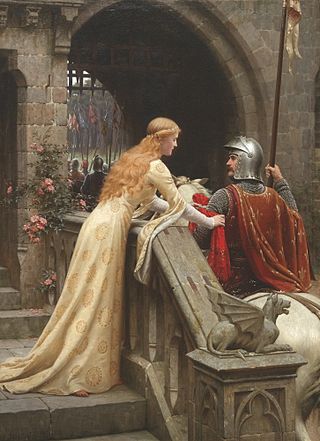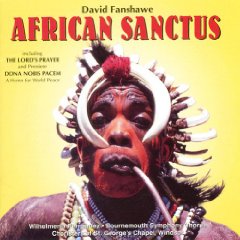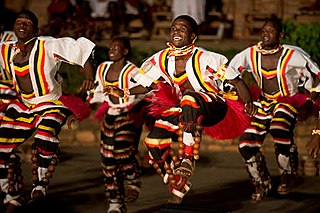
The Adhola people, also known as Jopadhola, are a Nilotic ethnic group of Luo peoples that live in Tororo District of Eastern Uganda and comprise about eight percent of the country's total population. They speak Dhopadhola,, which belongs to the Western Nilotic branch of the Nilotic language family. They are primarily pastoralists. The Jopadhola call their land Padhola which, according to historian Bethwell Ogot, is an elliptic form of "Pa Adhola" meaning the "place of Adhola", the founding father of the Jopadhola people. Officially, land of the Adhola is called Padhola, but the Baganda who misinterpret 'Widoma' – a Dhopadhola word for 'war cry' meaning 'You are in trouble' refer to the Jopadhola as "Badama". The social structure of the Jopadhola can be described as semi centralised because there is no traditional centralized government and its organization is limited to a clan called Nono. There are over 52 clans, each with cultural practices, common ancestry and a distinct lineage.

Courtship is the period wherein some couples get to know each other prior to a possible marriage or committed romantic, de facto relationship. Courtship traditionally may begin after a betrothal and may conclude with the celebration of marriage. A courtship may be an informal and private matter between two people or may be a public affair, or a formal arrangement with family approval. Traditionally, in the case of a formal engagement, it is the role of a male to actively "court" or "woo" a female, thus encouraging her to understand him and her receptiveness to a marriage proposal.

Bunyoro, also called Bunyoro-Kitara, is a traditional Bantu kingdom in Western Uganda. It was one of the most powerful kingdoms in Central and East Africa from the 16th century to the 19th century. It is ruled by the King (Omukama) of Bunyoro-Kitara. The current ruler is Solomon Iguru I, the 27th Omukama.

Culture of Uganda is made up of a diverse range of ethnic groups. Lake Kyoga forms the northern boundary for the Bantu-speaking people, who dominate much of East, Central, and Southern Africa. In Uganda, they include the Baganda and several other tribes

The Karamojong or Karimojong are a Nilotic ethnic group. They are agro-pastoral herders living mainly in the north-east of Uganda. Their language is also known as ngaKarimojong and is part of the Nilotic language family. Their population is estimated at 475,000 people.

War/Dance is a 2007 American documentary film written and directed by Sean Fine and Andrea Nix Fine, and produced by Shine Global's Susan MacLaury, a professor at Kean University, and Albie Hecht. It was nominated for the 2008 Academy Award for Best Documentary Feature and received the Emmy Awards for Best Documentary and Best Cinematography in 2010.

African Sanctus is a 1972 choral Mass and is the best-known work of British composer and collector of world musics David Fanshawe.
Acholi nationalism is a political ideology that seeks self-determination by the Acholi people.

The Tooro people, also known as Batooro or Toro people are a Bantu ethnic group, native to the Tooro Kingdom, a subnational constitutional monarchy within Uganda.
CEDA International aka Century Entrepreneurship Development Agency is a Non-governmental organization based in Kampala, Uganda founded by Rehmah Kasule. CEDA International Educates, Promote Leadership, Mentor and help with Entrepreneurship for women and youth all over East Africa.

The Acholi people are a Nilotic ethnic group of Luo peoples, found in Magwi County in South Sudan and Northern Uganda, including the districts of Agago, Amuru, Gulu, Kitgum, Nwoya, Lamwo, Pader and Omoro District. The Acholi were estimated to number 2.3 million people and over 45,000 more were living in South Sudan in 2000.
The Otole is a traditional war dance of the Acholi people. Its purpose is to teach young Acholi what to expect during combat. Participants include men and strong women aged 30-50 years.

Bwola, also known as Acholi bwola, is a traditional dance that originates from the Acholi people in Northern Uganda. It is reserved for special occasions and performances in front of royalty, including kings and chiefs. This dance is often showcased during the installation of new chiefs or at various royal functions.

Entogoro, also known as Orunyege, is a traditional courtship dance that is performed by the Batooro people of western Uganda. The dance holds great significance in the Tooro culture, practiced by young adults to select potential partners for marriage, as well as during weddings, initiation ceremonies, and social gatherings. Its name comes from the ebinyege rattles and entogoro rings associated with the dance.
Ugandan folklore includes traditional folktales and other folklore from the African country of Uganda. The convey meaning and experiences from generation to generation. Traditionally, folktales instilled discipline and good behaviour that shaped societal beliefs and norms within Ugandan society.

Orunyege-Ntogoro is a traditional dance from the Bunyoro and Tooro kingdoms in western Uganda. It is a courtship dance that involves the use of rattles (ebinyege) and rings (entogoro) to produce rhythmic sounds and movements. The dance is performed by young men and women who seek to attract and impress potential partners for marriage.

Dingi dingi dance, also known as Acholi Children's Dance, is a traditional dance originating from the Acholi people of northern Uganda who occupy districts such as Gulu, Kitgum, Lamwo, Pader, and Nwoya. The Acholi have passed down this cultural dance through generations. The name "dingi dingi" derives from the rhythmic sound produced by small drums played by skilled drummers.

Naleyo or Naleyo Dance is a traditional dance performed by the Karamajong people of North Eastern Uganda. It is a wooing dance performed in two lines with the women on one line and the men on the other line. The dance is characterized by the way the men and women jump high while facing each other, making it an interesting spectacle to watch.

Akogo dance is a traditional dance form of the Teso people of Eastern Uganda. This cultural expression is performed by both men and women, who gracefully move their bodies in synchrony with the rhythmic beats of the akogo, a percussion instrument crafted from bamboo tubes of varying lengths. The Dance is believed to have been performed by the Teso people for centuries and has evolved over time and has been influenced by other dance forms from neighboring regions.

Calabash is a traditional plant locally grown in many parts of Uganda. Its a non-food plant that produces several fruits of different sizes. The biological name of this plant is Lagenaria siceraria. Once harvested, its left to dry and is mainly used for traditional purpurses like dancing during traditional weddings, crafted as musical instruments by some tribes in their traditional dances for example the Bigwala, Baganda, Acholi, preserving milk, harvesting milk cream, and also used by traditional healers. Calabash is a symbolic cultural item that many Ugandan tribes use for different purposes.



















